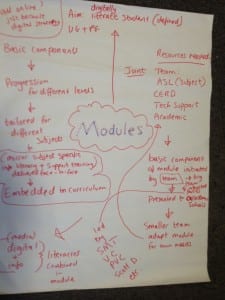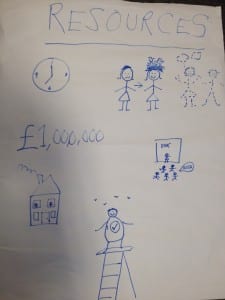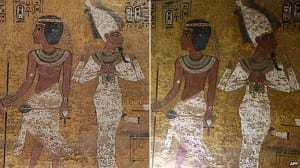Winter is the time of alternative beauty. I love the patterns of ice. The cold chills and I miss the sun on the allotment but there’s one more task to do; I always cut my grape vine at this time of year.
The tradition of pruning on Christmas Day is based on science. The wood should be cut when the sap is not rising and the coldest, deepest part of winter is the solstice around 21/22 December.
Astronomically, this is the when the sun is at its lowest point in the sky. This is also science. The earth takes approx 365 days to travel the ecliptic orbit around the sun. Every day since mid summer, in the northern hemisphere the sun appears to rise about 1 degree further south of east. This weekend the sun will appear to rise at the same point for three mornings; days are short, nights long, darkness appears to have overthrown light. Then – on 25th December – it rises one degree north of east and the celebrations begin. The sun has risen, been reborn, returned, light of life, conqueror of darkness, sun of god. Winter solstice is where science and culture merge.
In older times, the movement of the planets were interpreted as a celestial clock marking the optimum times for planting and harvesting. Some people still garden by the moon, many following the philosophy of Rudolf Steiner. Again this is science. No one can deny the gravitational pull of the moon on the tides so the relationship between planting and lunar phases makes sense. As the levels of ground water in the soil are pulled upwards during the full moon this is the optimum time to plant. Seeds and seedlings reach for the light and benefit from increased hydration. Cutting, pruning and harvesting all depend on the type of plant but it’s a biodynamic fact grape vines bleed so should only be cut when the risk of infection and death is lowest.
Too often the older wisdoms have become lost. This is sad because we all need ways to connect with the earth beneath our feet. I like the space at the end of the year when email goes quiet and I love swapping presents with friends – but don’t buy into the surface presentation of self decking the halls in glittered tinsel. Holly and ivy is fine, tied with red and green ribbons, and never have artificial lights been so easy and pretty. See, I’m not all bah-humbug! My perfect day is on my terms. For me this time of year is about taking advantage of the lull to look back, look forward and take the opportunity to be myself. I love Christmas but I love it for the deeper significance of the turning wheel of the year. Best wishes for 2014. Blessed be.
“Books are where things are explained to you; life is where things aren’t. I’m not surprised some people prefer books. Books make sense of life. The only problem is that the lives they make sense of are other people’s lives, never your own.” Julian Barnes, Flaubert’s Parrot
———————————————————————————————————————-
image of planting http://www.pottingblocks.com/product_images/uploaded_images/planting-moon-phases-751×507.jpg


















